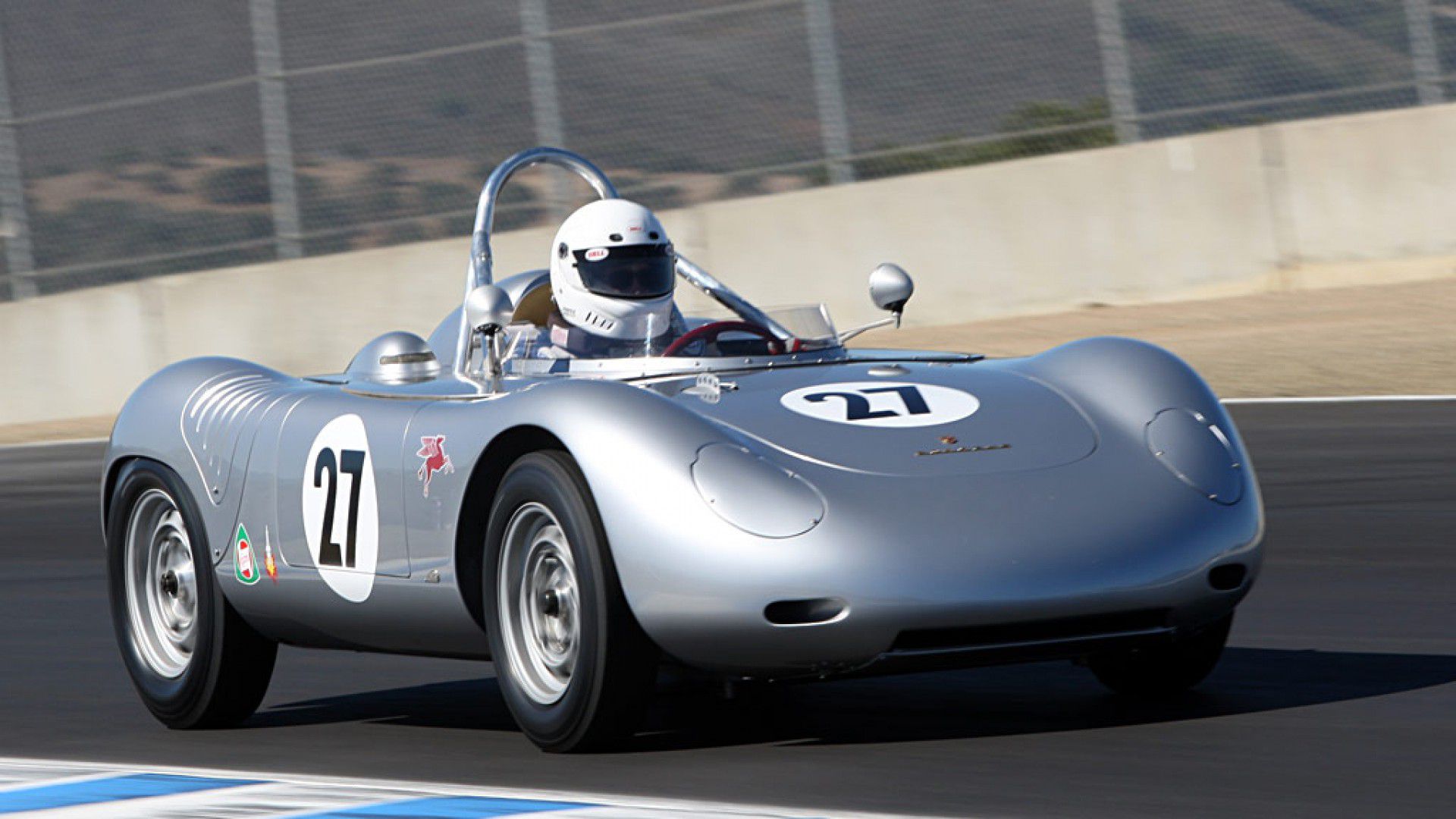Porsche 718
From the Porsche 550 1957 Porsche 718 was developed that the successes of his predecessor could surpass.
He was further developed in addition to the numerous variants Spyder (RSK to RS 61) also for single-seaters for Formula 2 and Formula 1 and still privately used until 1964 in Formula 1.
Outwardly, he was at first hardly be distinguished from its predecessor. The improvements put under the body. The motors and the brakes were powerful and above all, the car was lighter than the Porsche 550
The first engines rendered first 104 kW (142hp) at 7500 rpm. The performance was by the year 1961 raised further so that it was in the last Porsche 718 at a speed of 8000 rpm at 118 kW (160hp). This was mainly possible by increasing the displacement from 1.5 liters to 1.6 liters.
Already in the 24-hour race at Le Mans 1958 Porsche was able to prove 718 RSK sensational 3rd and 4th place in the overall standings, with Jean Behra/Hans Herrmann in 1600 for the two-liter class and Edgar Barth/Paul Frère in the 1500s. The Porsche 550A of Carel Godin de Beaufort/Herbert Linge added the triumph, in which two of the three-liter Ferrari 250 TR Testarossa were referred to the courts. It was not until 1966 should the displacement weak Porsche there again on the podium can drive.
In 1960 Porsche managed with Hans Herrmann/Olivier Gendebien first time to win in the 12-hour race at Sebring in a second major round of the World Sportscar Championship a total victory.
Also victorious were the 718 RS versions in the Targa Florio in 1959, 1960 and 1963. Between, you had to the larger-displacement Ferrari Dino 246SP bow.
With the Spyder Porsche won from 1958 to 1961 also continuously the European Hillclimb Championship, against, inter alia, the Borgward with their modern four-valve engines.
As a sports car successor came after the withdrawal from Formula 1 1963 Porsche 904
Porsche RSK 1981 at the Oldtimer Grand Prix on the Nürburgring
Porsche 718 W-RS Spyder at the 1000km race at the Nürburgring 1962
For use with Formula 2 race the two-seater was first in 1958 Central link modified, and from 1959 a true single-seater with open wheels.
In 1960, sat Rob Walker Stirling Moss a 718 at F2 race one. Since Moss was injured, replaced him at the Grand Prix of Solitude in Stuttgart, one of the two-wheeled pilots present for the Motorcycle Grand Prix, the British driver John Surtees. However, it won Wolfgang Graf Berghe von Trips on the Ferrari Dino, who was dominated as a Ferrari 156 in F1 next year.
The 1960 F2 for the advertised Grand Prix of Germany at the Nürburgring-Südschleife won Joakim Bonnier. In addition, we went to the Italian Grand Prix in Monza, where it was still driven on the banked corners variant. Hans Herrmann scored the 6th Place a championship point against the 2.5 liter engine much better motorized F1 Ferrari. The British stayed away in protest against the safety of high-speed line and the pending rule change.
Was a result of the rule change from 1961 the 718 and the successor of the Porsche 787 used later factory in F1.
While it developed early on an eight-cylinder, but the use was delayed again and again. At Zandvoort, the inferiority of the 718 and 787 in terms of chassis and engine showed drastically. Dan Gurney was overtaken and only tenth in the 15 car field small. The private driver Carel Godin de Beaufort and Hans Herrmann with a disappointing weak-injection engine were the laggards with 3 laps down. After all contributed to the reliability of the Porsche in that, in this Grand Prix of the Netherlands, all started car finished the race, which was unique in the F1 for decades (until 2005).
At Spa-Francorchamps were downgraded back to carburetor instead of fuel injection, whereupon they finished sixth and seventh. On the fast track of Reims is nearly gave the first victory, but the wearing by failures of the Ferrari newcomer Giancarlo Baghetti it. Also on the domestic routes Solitude (winner in not for the World Cup scoring run was Innes Ireland Lotus) and Nurburgring were not satisfactory the results. A surprising success of the 718 in Formula 1 was number four of Gerhard Mitter at the Grand Prix of Germany 1963.
A total of 718 proved for the F1 as too big and too weak. For the 1962 F1 season, therefore, the Porsche 804 was developed. Carel Godin de Beaufort put a 718 still continues as a private driver in F1 one, had an accident with it but in 1964 fatal.
The Porsche 718 was built in the period 1957-1962. Although it was designed as a racing car, it could be approved for use on public roads. This was true for the Formula 2 and Formula 1 versions of course no longer true.
160
